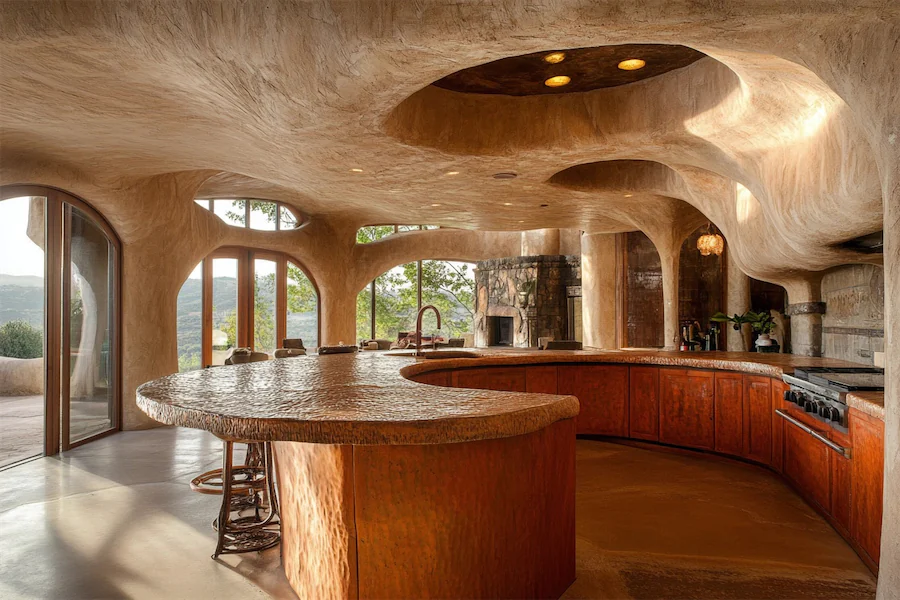A textured kitchen design introduces depth and visual interest by incorporating various materials and finishes, creating a dynamic and inviting space.
Key Features of Textured Kitchens
- Diverse Materials: Utilizing a mix of materials such as wood, stone, brick, and metal adds layers of texture, enhancing the kitchen’s aesthetic appeal.
- Contrasting Finishes: Combining matte, glossy, and rough surfaces creates a tactile experience, contributing to the kitchen’s unique character.
- Natural Elements: Incorporating natural textures like exposed brick walls or wooden beams adds warmth and authenticity to the space.
Applications of Texture in Kitchen Design
- Cabinetry: Introducing reeded, fluted, or slatted cabinet doors can significantly enhance the kitchen’s texture, providing depth and visual interest.
- Backsplashes: Using textured tiles, such as Zellige or subway tiles with a handcrafted appearance, adds a tactile element to the kitchen’s design.
- Countertops: Selecting materials with distinct textures, like leathered granite or honed marble, contributes to the kitchen’s overall sensory experience.
Considerations When Designing a Textured Kitchen
- Balance: Achieving harmony between different textures is crucial to prevent the space from feeling overwhelming or chaotic.
- Maintenance: Some textured materials may require specific cleaning and upkeep; understanding these needs ensures the kitchen remains functional and beautiful.
- Cohesion: Ensuring that the chosen textures complement the overall design theme maintains a cohesive and aesthetically pleasing environment.
Conclusion
Incorporating texture into your kitchen design enriches the space, adding depth and character. By thoughtfully selecting and balancing various materials and finishes, you can create a kitchen that is both visually appealing and inviting.
